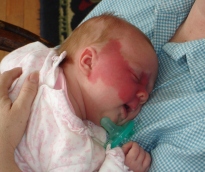Blog Archives
Parenting Strategy #9: Be Honest About the Error
Posted by Jennica
Parenting Strategy # 9: Be Honest about the Error
In my last post, I said that it’s important to treat facts neutrally. Your child needs to know the basic facts about her face: you have a birthmark. The birthmark is a port wine stain. A port wine stain is extra blood vessels.
And (are you ready?): That birthmark is an error.
The port wine stain is an error. Something went wrong in utero, and the nerve that was supposed to send a signal to its related blood vessels to “Stop growing!” never did. So they kept growing, even though they weren’t supposed to.
That’s not negative commentary, it’s a fact. And we face that fact honestly and neutrally.
Let me stress that – you must be neutral when you’re honest! You don’t mope, groan, cry, exaggerate, or sigh when pointing out that an error occurred. It’s simply a value-neutral fact. It’s an error.
I can’t tell you how important this is. It is the foundation of grace. Addy knows that she’s beautiful and that she’s fearfully and wonderfully made, and that she is not perfect… Because no human is.
Let me repeat that: no human is perfect. That is the message your unique child needs to understand to the depth of their soul. We all have errors. None of us is living in the Platonic ideal of a human body. We have moles, we have quirks, we have genes, we have illnesses, we have mutations – many of them just too small or out-of-sight to notice. Someone like Addy might wear their error front & center, but everyone is flawed, somewhere, somehow.
That’s why the fact that a port wine stain is technically an error doesn’t have to be negative. I’m flawed, you’re flawed, everyone is flawed! Her port wine stain doesn’t have to be ‘better’ or ‘worse’ than any of your features. It simply is.
We can, and should, learn to appreciate the beauty in other humans’ traits, many of which are themselves errors. (Even adorable freckles, after all, are little bits of pigment gone awry.) But remember that you don’t have to erase the fact that an error exists in order to call it beautiful.
We’re afraid that if we call a feature less than perfect, we’re somehow being negative or derisive. And so we call it perfect instead – as if anything less than perfect can’t be beautiful.
But it’s okay to acknowledge an imperfection, even to the point of working to fix it with powerful lasers, and also see the beauty in it all the while. It’s not either-or. It’s both-and.
Don’t be afraid to call that beautiful birthmark an error. It may actually, unexpectedly, feel validating for your child to know that yes, something went wrong, and that’s okay. She doesn’t have to feel ‘perfect’ about it. This isn’t a big deal. Everyone’s got something. And even while the laser surgeries make progress on fixing the error, she can feel beautiful with it all the while.
As your child understands that this birthmark is an error, she may start noticing all the other errors around her. This is healthy; she’s finding camaraderie. Addy loves knowing that my spine is shaped like a long ‘S’ from scoliosis, and that her dad has a dark birthmark on his side. She loves finding strange markings and alopecia and missing limbs around us. Because she knows that everyone’s got something a little ‘off’, and she thinks that’s pretty awesome.
So when you’re talking to your child about their birthmark, go ahead and be honest about the fact that it’s an error. It’s an error, and that’s okay. That doesn’t mean it’s not beautiful; it’s absolutely beautiful. It simply means that she’s not perfect.
Which means, really, she’s just like everyone else after all.
.
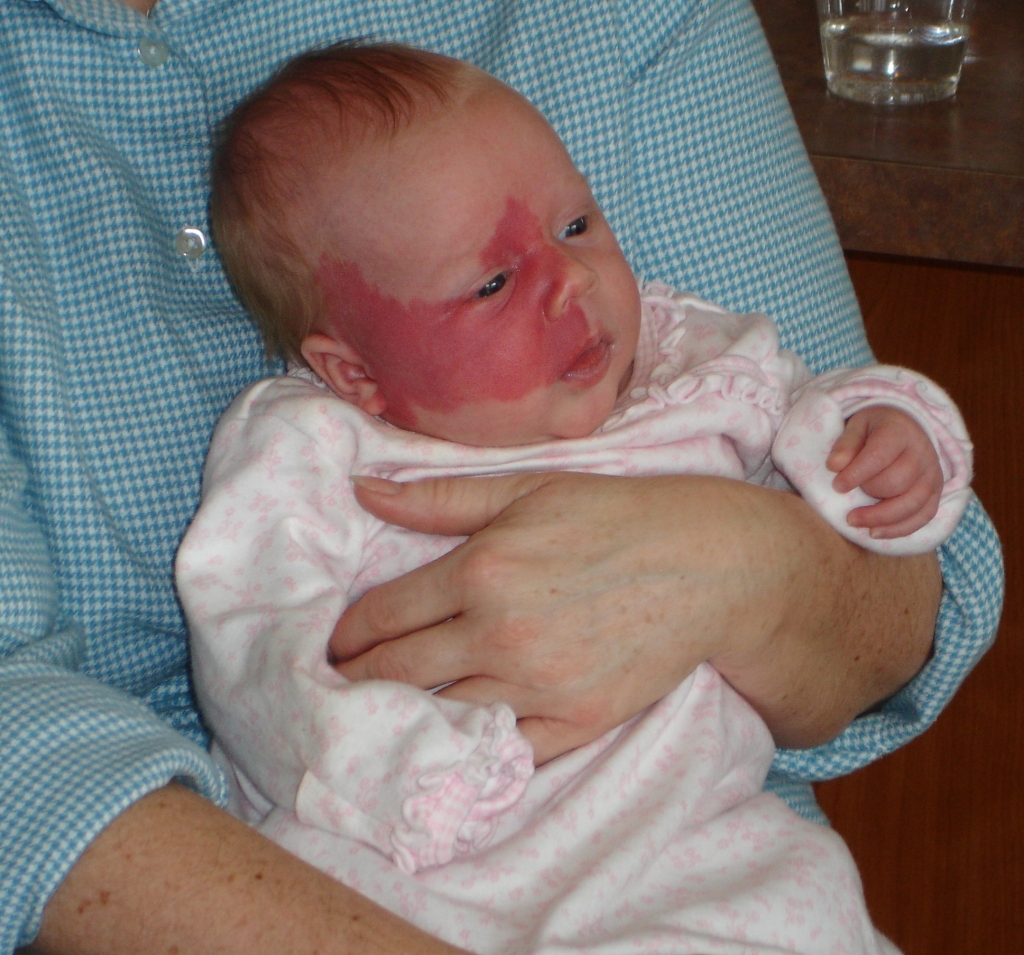

.
A few other “Strategies for Parenting a Unique Child”:
Parenting Strategy #8: On Talking
Parenting Strategy #7: Get Out
Parenting Strategy #6: Find Likeness
Parenting Strategy #5: On Makeup
Parenting Strategies, Part 2: On Beauty
A Few Parenting Strategies…
Posted in 3. Addy Stories & Experiences
Tags: Birthmarks, Coping, Encounters, Grace, Parenting, Perspective
Parenting Strategy #8: On Talking
Posted by Jennica
When you have a child with an odd-looking face, you realize that you’ll have to talk about it… with her… at some point…
And that’s a terrifying prospect.
You want to be the first voice and the last word your child hears about her face. But what do you say? How do you bring it up? You want her to know it’s not taboo, but you also want to avoid Making It Into An Issue.
So what do you do?
Parenting Strategy #8: Speak Neutrally.
You speak neutrally about the birthmark.
It’s not a beauty mark, and it’s not an ugly thing; it’s simply a birthmark.
Your job as parent is to teach your child what the thing on her face is. Provide facts. Keep it simple.
You may be tempted to pre-empt any sad feelings by skipping the facts and rushing straight to the compliments, like I was: “That’s your beauty mark!”
But if she only knows it as a ‘beauty mark’, then she won’t be emotionally prepared for another child bursting that bubble by blurting out that it’s not beautiful.
More importantly, if you only ever talk about the birthmark positively like it’s an absolutely awesome thing, then you may not be leaving the door open for your child to discuss a negative experience around it later. She needs to know that door is open.
The birthmark is a fact. It’s just there. Yes, you should also teach her that it’s beautiful, and that she’s extra beautiful with it. Yes, compliment her up and down a million different ways, but do not neglect to give her a foundation of dry facts. She needs to know what’s on her face.
Here’s what it sounds like: When she becomes more aware of the world around her (around toddlerhood), spend some time looking into a mirror with her. She might look curiously back and forth between your faces, or she might point to her birthmark for the first time. When she does, keep it neutral and factual: “That’s your port wine stain.”
That’s it. You may be afraid that if you’re not super-positive about the birthmark, she’ll feel negative about it. But that’s not true! Young children live in a black-and-white world of facts. Facts are incredibly reassuring as they order their universe. Don’t worry about being too dry and neutral. Keep it simple. She’s not doing a philosophy dissertation yet.
Tell her what it is: “That’s your birthmark.” “Your birthmark is a port wine stain.”
Help her differentiate: “You have a port wine stain.” “Mommy does not have a port wine stain.”
Empower her to pronounce: ‘blood vessels’, ‘laser surgery’, ‘bruise’, ‘pink’, ‘purple’.
At her laser surgeries, give her more facts for context: “A port wine stain is extra blood vessels.” “The laser zaps the extra blood vessels.” “Your laser surgery causes bruising.” “The purple is bruising from the laser surgery.”
Don’t get emotional. It’s SO tempting to jump to opinions, especially when your child looks in the mirror after a laser surgery, because it will feel like a knife to the gut when she stares in shock at her own purple face, and you will want to blurt out through a choked voice, “YOU ARE SO PRETTY AND YOUR FACE IS PERFECT AND I LOVE YOU SO MUCH!”
But she’s probably not upset by it yet – she’s just surprised at the change. If you jump in defensively, then she’ll conclude that something must be wrong with her face. So keep it neutral, and teach her the facts: “Your birthmark is purple now, because of your laser surgery.” Don’t assume she’ll figure that out on her own. Then compliment her on how awesome the purple is; after all, it is a pretty fantastic color. (As Addy told us one day before preschool, with a voice full of pity for her peers, “Not everyone gets to have purple on their face.”)
Talk to her about the likelihood that other people will wonder what’s on her face. Help her understand that it’s okay when they do. Don’t pre-empt negative encounters by saying something like, “If ANYONE ever makes fun of you for this, you just WALK AWAY!” You don’t need to go there yet. Don’t set her up to assume that encounters will be negative. Most of them aren’t.
Instead, just give her a neutral heads-up that people might ask about her face, and teach her the basic facts about why it’s unique. “Other kids don’t know what this is.” “Other kids don’t have one.” “Other kids might ask about this, because it’s different.”
Seriously. That’s it. That’s all you have to say.
And you can always debrief at the end of a school day or playground date with a simple question: “Did anyone ask about your face today?” But, again, be neutral! Don’t interrogate her with an attitude like, “People are idiots so I’m sure something bad must have happened and I need a full report, so sit down and spill it.” That’s too much pressure. Instead, use the same chilled-out tone of voice you might use to ask, “Oh hey, did anyone ask for your autograph today?” (Because it’s pretty much the same thing, right?)
Don’t jump ahead to being defensive. Don’t skip over the basics. While she’s little, linger in the dry, boring realm of neutral facts. Facts are reassuring and empowering as she learns how to speak about her birthmark.
This will tell her that the topic is open for discussion at home, without any pressure to feel one way or another. And this will equip her to answer the questions in public, factually, all by herself, without any stress.
Because at some point, the questions and comments will shift from being directed to you, the parent, to being directed to her and her face. And if you’ve equipped her with the neutral facts, then even when she’s little she will pipe up with an easy, relaxed, disarming answer: “Oh, this is my birthmark!”
And you’ll exhale the breath you hadn’t known you’d been holding, and with a flood of relief you’ll realize: she’s got it. She can handle this. She can speak for herself. She’ll be okay.
.
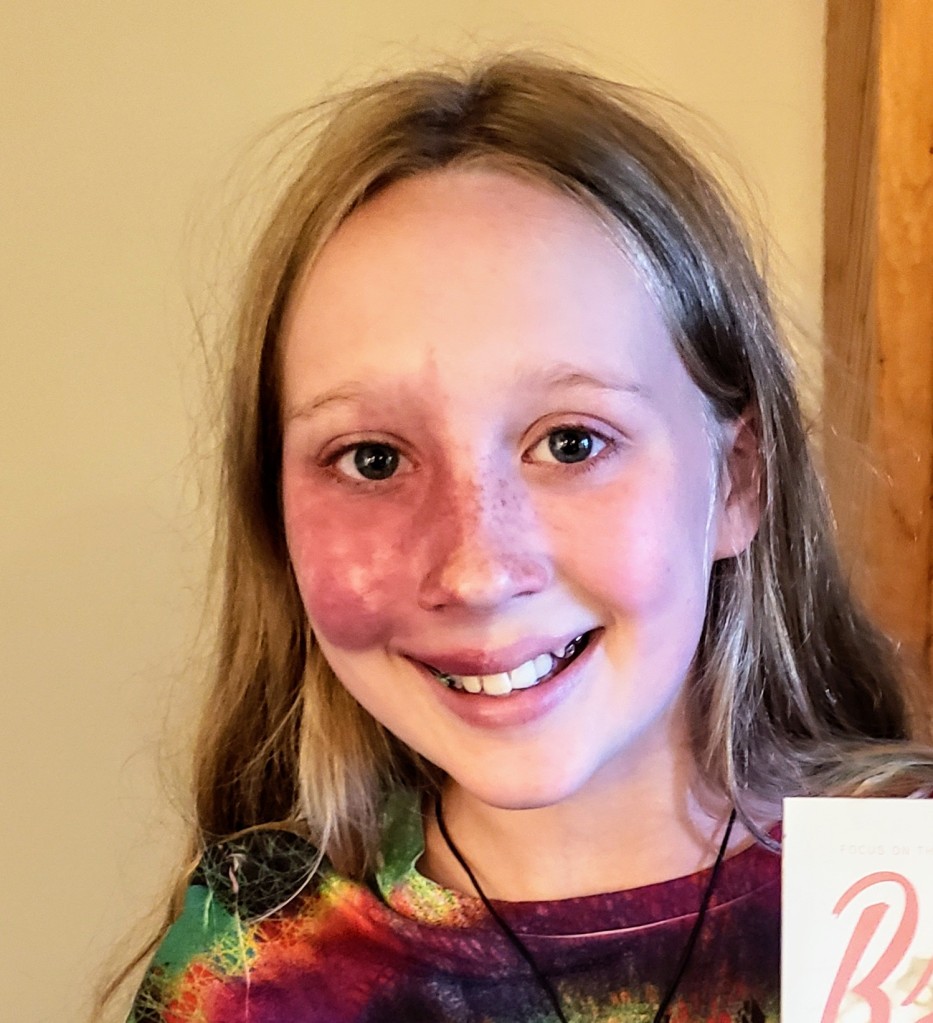
Parenting Strategy #7: Get Out
Posted by Jennica

“Parenting a Unique Child” Strategy #7: Get Out
Addy’s first two years of life saw her tagging along everywhere with my husband Keith while he constructed our house. He’d frequently plop her in the Baby Bjorn carrier, facing out, and take her along on errands to Lowe’s, Home Depot, and Menard’s (often all in one day).
He has a gift of interacting easily and casually with everyone; he small-talked with electricians in the wiring aisle and chatted up every awkward cashier. Addy learned, just by watching him, how to speak casually to other humans, no matter how different.
She joined the game, gleefully leaning forward in that carrier, kicking her chubby little legs and yelling an ever-louder, “Hi! HI! HI!!!!!” to every introverted plumber & roofer they passed in every aisle.
If I’d been on duty, I would never have taken her along on as many errands as Keith did, and I wouldn’t have broken out of my introvert’s shell with nearly as much small talk with strangers. In hindsight, I see the serendipitous value of all their trips outside the home. Through them, she watched and then copied all kinds of comfortable, casual, social interactions.
In the early years, be intentional about getting your unique-looking child out into the world, a lot, with you. They need to see many, many different interactions with the outside world, but they need to be safely in your arms while you handle every encounter with good humor and grace.
Your child needs to hear you say ‘please’ and ‘thank you’ to the cashier who’s a little slow. Your child needs to hear you make polite small talk with the plumber behind you in the checkout line. And your child needs to hear you answer “Is that a burn?” with grace and gratitude, because then she’ll know how to answer the same way someday.
It’s only by modeling it that you’ll teach it. Get your kid out to the store and out to the mall, put down your phone, make eye contact, say please and thank you, and let people ask about your kid’s strange face. Those encounters build up a repertoire of responses for her to use when someone asks her later. That’s how she will learn grace, confidence, and the ability to move on smoothly from awkward encounters.
You don’t want to send her to school having only overheard a dozen impromptu interactions about her face in her young life. The real world is the best place to learn it, and safely in your arms is the best way.
This kind of intentionality takes time and effort. It’s so much simpler to run errands alone on your lunch break! But your child will benefit from the tedious errand-running experiences that might otherwise be missed.
That might be you, your spouse, a grandma, or the daycare lady; whoever it is, give them permission to bring your little one out into the world for lots of little unplanned interactions. Over time, your child will be empowered to socialize gracefully, with a wonderful variety of other humans, regardless of how different she might be from them.
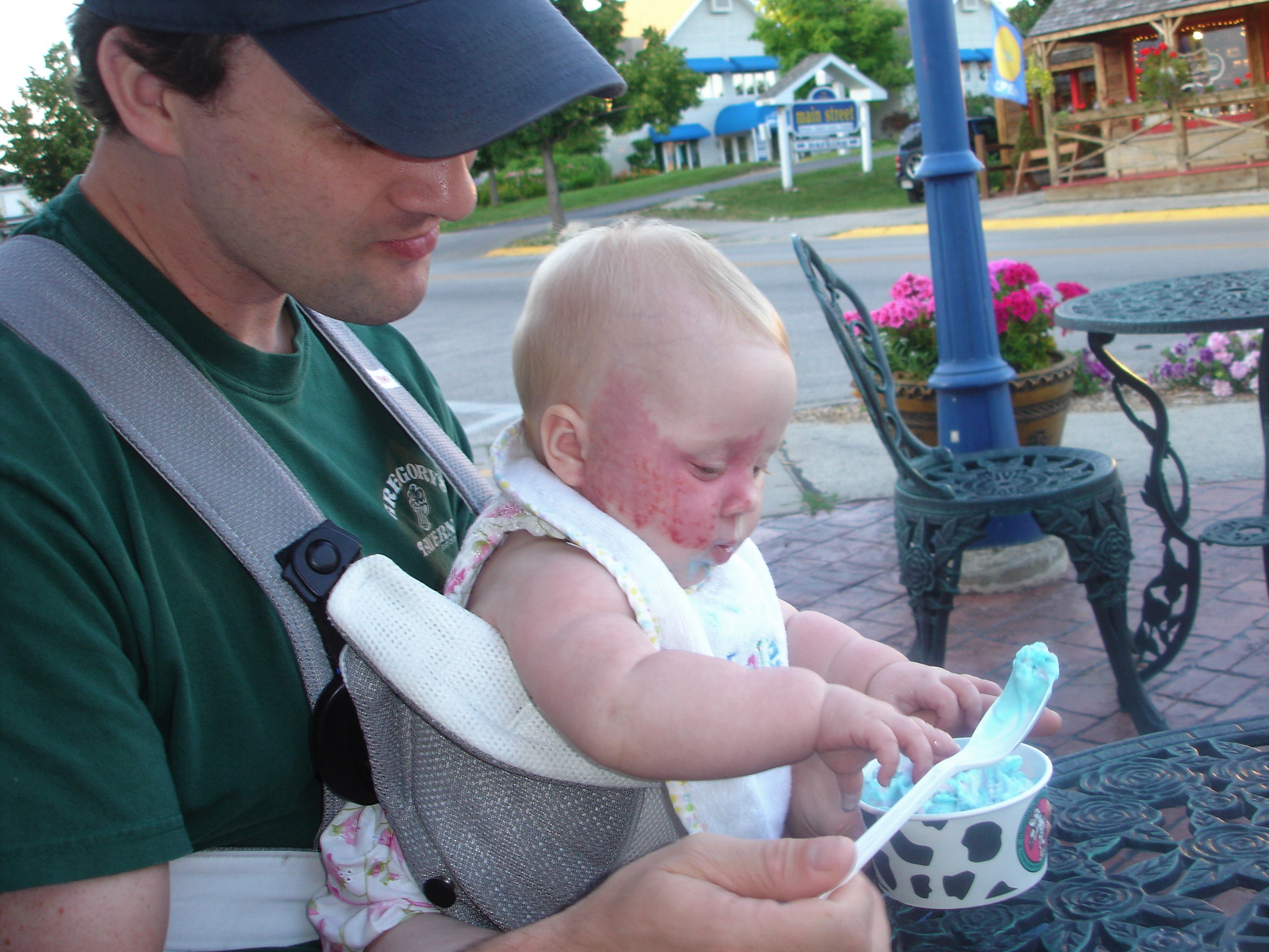
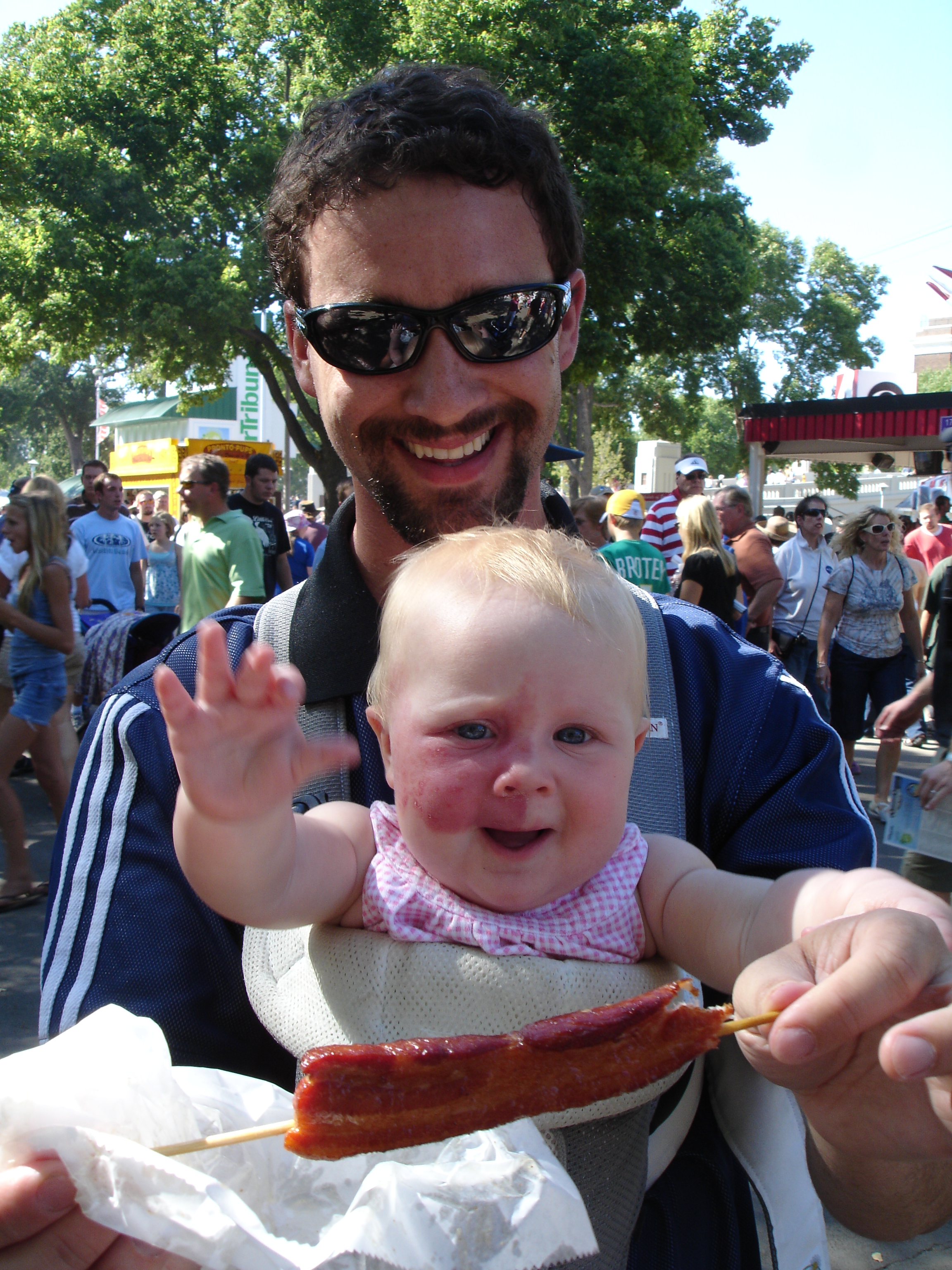

For Parents: How To Encounter Humans, Part 2 (of 2)
Posted by Jennica
Last week, I shared a few embarrassing moments that have taught me respond with grace when people comment on my daughter’s face, even when they seem ‘ignorant’ at first glance.
“Is that a hemangioma?”
“What happened to her face?”
“What do they call that?”
I’ve learned over the years that the very people who are asking often know more than I do, or they wouldn’t be interacting at all. Because of this, I welcome their questions.
But if they don’t? And they still remark on the stain?
“Oh, that’ll go away!”
“Wow, didja slap her?”
“Get some sunscreen on that baby, she’s burning!”
Yes, that will happen. And it’s totally okay.
You’ll want to feel indignant, you’ll want to reply with sass, you’ll want correct their manners… but: it is so, so much better to extend grace. Because it will keep you sane, and, really, the world needs a little less sass and a lot more grace.
But grace isn’t always easy.
So, to help, let me offer what we’ve found to be the typical sources of all those questions and comments. Because in our experience (over a decade now), we’ve noticed that there are a few consistent reasons why people comment or ask about our child’s face.
This list I’m giving you may not be comprehensive, but these are the most common reasons that will pop up again and again, driving people to remark or inquire. Remembering these will save your sanity when you get a comment or question from a stranger:
Reason #1
They comment because: They’re human.
I know, it’s a broad category to start with, but hear me out.
You know what a totally natural part of being human is? Awkwardness. We’re awkward. We’re imperfect; we make mistakes, all day, every day. No true conversation is scripted or rehearsed; it’s impromptu. It’s messy, it’s full of awkward missteps and blurtings-out that make you want to put your head in your hands and hide. But it’s Life Among Humans, and it’s all we have to work with if we want genuine interaction.
The inquiries, comments, and tips you’re getting may be awkward, but they’re spoken, open and honest. If awkwardness is the price of genuine human interaction, I’ll take it.
Reason #2
They comment because: They’re concerned.
Probably half of the inquiries, comments, and tips we’ve gotten, especially from young children, have been due to genuine concern that she was in pain.
When they bring it up, what they mean is: “Was she burned??” “Does it hurt??” “Is that a sunburn??” This is a blessing, and reminds us that the world hasn’t yet gone to hell in a handbasket. Thank them and the Good Lord for their unnecessary concern over your offspring.
Reason #3
They comment because: They’re curious.
This is not a bad thing! As humans, we’re wired to look at the world around us, take it in, assess it, and survive together. We want to know each other’s stories; we want to know what happened and why. We want to know each other. This is a good thing!
When we see a Different Human, we’re naturally curious: Why is he in a wheelchair? What is his Story? Why is she missing an arm? What is her Story?
Curiosity is good. It’s a cousin to Concern, above. Let them build empathy.
How did you become like that? Was it hard? Did it hurt? Did you fight the dragon and win? What’s your Story?
Reason #4
They comment because: They’re a cognitively or behaviorally challenged adult who looks normal on the outside but is in fact operating at a child’s maturity level.
Autism, closed head injuries, and other disorders look normal, but come out as socially ‘awkward’. These people may be totally blunt, and may even seem rude. If an otherwise normal-looking guy is mopping the floor and makes a weird comment on your child’s face, he may have had a motorcycle accident 20 years ago, and that’s why he’s mopping floors. Give him grace.
If you pay attention to exactly who is saying the seemingly ‘rude’ things regarding your child’s face, you’ll notice that a higher proportion of them seem more socially awkward than their outer appearance might otherwise command. They may have a cognitive or behavioral issue, and deserve your politeness as much as anyone with more developed social graces.
Reason #5
They comment because: They’re mean-spirited and enjoy making you feel bad.
We’ve had…one…maybe two, I think, in Addy’s first decade of life. With rates like that, they’re easy to shrug off.
As your child grows, you can teach her both pity and concern for the poor souls who have such a miserable life that they treat others miserably. Teach her how to keep them at arm’s length, but kindly. Pray for them together, and I don’t mean in a patronizing way – truly plant seeds of concern in her heart for their misery, and she’ll learn to let their miserable comments roll off her back with wisdom beyond her years. The mean child might be the girl who hears she’s ugly from her own parents; it might be the boy who’s been bullied as long as he can remember; it might be the spoiled brat whose lazy parents ensure his imminent failure in adulthood. In any case, they deserve our grace, not our fire.
Reason #6
They comment because: They know someone who “had one just like it!” Listen for these carefully; as you can tell with my own humble experiences, they don’t always start out sounding wise & experienced; they usually start out quiet & awkward (because, you know, humans). These encounters are as valuable as gold – learn all you can from them, for these folks know what it’s like to be in your shoes.
In my experience, just about every comment & inquiry you’ll receive will fall into one of these 6 categories, with most being good-hearted & awkward attempts at conversation.
It might be the old lady at the checkout line making Awkward Human Conversation by commenting, “Boy, you need to use more sunscreen on that baby’s face!” because she doesn’t know what else to say, and in the seven years since her husband’s death, she hasn’t gotten out much and is starved for Human interaction and is lobbing what she can over the conversation ‘net’.
It might be the normal-looking guy mopping floors who ‘rudely’ asks, “Woah, didja slap her?” because, in his childlike mind, it’s a funny thing to joke.
It might be the mom just a bit older than you, giving your child those sidelong, judgy-looking glances that you hate so much, who’s really just glancing over discreetly to see if it’s the same thing her own daughter has, wishing she could strike up a conversation about it if she weren’t so introverted.
Grace, grace, and more grace. We taught Addy early on to take every interaction openly and with a smile; “Yes, that’s my port wine stain! I just had a laser surgery.” It’s not a secret, it’s not shameful; it is a fact, and we’re okay with it.
When an adult tells me, “Oh, my son had a hemangioma like that, and it went away,” my exhaustion could easily respond with: “For the millionth time, this is NOT a HEMANGIOMA and it WILL NOT go away on its own!” But instead I reply: “Oh, that’s awesome! This will go away, too, but only with laser surgeries.” There: I’ve affirmed their kind attempt at conversation (probably meant to encourage me), and I’ve responded with warmth and truth.
So. When I’m out in public with my kiddo, when she gets some stares, when I hear the old: “Wow, what a sunburn!”, my indignant Mommyhood could easily respond with: “So help me, for the LAST time, this is NOT A SUNBURN, it’s a birthmark, and it WILL NOT HEAL, and not only will it not heal, but she’s had FORTY-THREE – did you hear that, FORTY-THREE! – laser surgeries to try to zap it off AND IT’S STILL THERE. NO! IT IS NOT A SUNBURN!”
But I’ve trained myself to observe who is making the sunburn comment. It’s an awkward cashier — the old lady starved for conversation. It’s an awkward guy mopping the gas station floor, too awkward to be cognitively healthy. It’s a bank teller who has to make conversation because her computer is processing too slowly, and it’s a fine opening attempt.
So instead, I smile and with a quick laugh say, “Actually, it’s a port wine stain, but it totally looks like a sunburn! We get that a lot.” And then either the conversation is done (transaction over), or they want to know more (inquisitive Humans), and I oblige.
After all, they’re taking time out of their day to learn about my offspring, and what mother doesn’t want to talk about her perfect & precocious offspring?
I’m grateful that they lobbed an attempt over the conversation net. I’m grateful that they’re open enough to the world around them to look at other humans. And more than anything, I’m grateful for their ever-human curiosity and concern over a child they didn’t have to notice. To me, all of their comments and questions are beautiful things.
Posted in 3. Addy Stories & Experiences
Tags: Coping, Encounters, Grace, Parenting, Perspective
For Parents: How to Encounter Humans, Part 1 (of 2)
Posted by Jennica
When you encounter other humans and they comment on your child’s face, there’s an overwhelming array of responses, not all of them nice, running through your head.
I have been there.
I have heard the misinformed, “Oh, that’ll go away!”
I have heard variations on the ever-humorous, “Wow, didja slap her?”
I have heard meddling old ladies tell me, “Get some sunscreen on that baby, she’s burning!”
I have felt defensive. I have felt like screaming. I have felt like rolling my eyes and snarking.
But.
I don’t. In spite of overwhelming temptation (and a culture that tells us to be offended by every word and look), I don’t. I give them room to be human. Because I’ve been deeply humbled in a few encounters with other humans myself.
Allow me to share 3 of those encounters with you here; three times when I’ve embarrassed myself with my own indignance and pride.
I’ll continue the theme of how we ‘encounter others’ in my next post, but for now, just let me share my embarrassment with you today.
Parents, I hope these encounters help ease your mind and empower you with grace when encountering humans in the world, even when you’re not feeling very gracious.
1. I’ve written about this one before, but it bears revisiting.
One day, I was standing in line for ice cream at a crowded, noisy, charming small-town candy shop. Little Addy (probably almost 2 at the time) was in my arms, looking backward over my shoulder. Suddenly, a guy behind me boomed out with a loud voice (BOOMED! AUDIBLY!): “HEY! SHE HAS A BIRTHMARK!” My back stiffened, my arms tightened, my jaw locked; I checked Addy to see if she’d heard, and began turning around slowly (expecting, I suppose, to death-glare the nitwit into submission, because acting on any other maternal instinct would have gotten me arrested).
Before I could turn all the way around to glare down this ignoramus, he continued, “JUST LIKE ME!” And, voila, there before me stood a tall, handsome, confident young man, maybe 30 or so, with a HUGE port wine stain on his face that was indeed just like Addy’s, only even bigger and even darker. It wrapped up onto his scalp, which was proudly clean-shaven.
He wasn’t ignorant. He was confident – and I saw in one glance that it must have been a hard-won confidence. He had earned it. He definitely knew more than I did. His enthusiasm was contagious, and it was exactly what I needed.
This marked stranger was generous and happy to welcome us into his club. I was ready to crawl into a hole, but we struck up a conversation about laser treatments instead, and he warmly answered my many questions about his experiences growing up with his stain.
I have never forgotten that feeling of welcome, of relief in finding the camaraderie I hadn’t even realized I’d been seeking.
And I’ve also never forgotten how close I came to shutting out such a rich experience, simply because I ignorantly assumed that anyone speaking a single word about my daughter’s birthmark must know less than I do.
2. Addy underwent her first laser surgery when she was 5 weeks old, and then for the next two years she had a surgery each month. So we spent a lot of time at Children’s hospital, hanging out in the pre-surgery waiting room with other families about to be admitted for various minor outpatient surgeries. Dr. Z. scheduled his laser surgeries for the same day each month, and the play area was often dotted with other port-wine-stained kids and their apprehensive parents.
One morning in that waiting room, around her 9th surgery, I struck up a conversation with a mom whose healthy-looking 12-year-old daughter was sitting beside her. Addy was crawling all over my lap, and her unique face came up naturally in conversation. I began telling the mom what Addy was here for, and how Addy’s had a number of surgeries already, and how her face gets bruised every time. (At this point, we had more experience than many other laser-surgery parents there, so I was used to answering questions.)
This mom replied that her daughter was also here for a laser surgery with Dr. Z. I pointed to the play area and inquired which little one was hers, since the older kid next to her was clearly fine. “Oh, no, it’s this one,” she said with a laugh, putting her hand on her twelve-year-old. “She’s got a port wine stain all over her back, and also all the way down both legs, and it’s really thick, and she’s had a ton of laser surgeries already. We lost track ages ago. She’s on swim team, since contact sports aren’t great for her, and she used to get embarrassed about wearing a swim suit, but she’s just had to make peace with it now that she’s on the team. We try to laser it whenever we can…”
I was amazed. This healthy girl was hiding a stain like Addy’s? And an even bigger one? And I can’t see it? And an even thicker one? And she’s had more surgeries? And she’s struggling with uncovering it for swim team?
The whole time I’d been talking to this mom, I’d been assuming that she probably didn’t know much about port wine stains, and that I was ‘informing’ her, while in fact she knew much more than I did. Again, I wanted to crawl into a hole, but she was gracious and warm.
3. When Addy was just a month old and her port wine stain was still very dark, Keith & I brought her over to a friend’s home to meet his whole family, including his parents and his younger siblings (whom we ourselves didn’t yet know very well).
In that first month of Addy’s life, I had already received a lot of warm but maddeningly erroneous encouragement from ignorant people telling me, “Oh, don’t you worry, that birthmark will go away.” Even the nurses at Addy’s birth had said it. I had wanted to scream at every single wrong one of them: “No it won’t! Not without laser treatments! A LOT of laser treatments!” They’d meant well, but they’d been confusing port wine stains with hemangiomas, and by the time that first month had passed, I’d had it *up to here* with bad advice, and was ready to snap if, so help me, I had to hear to that glib dismissal one more time.
We arrived at our friend’s house, and two younger sisters enthusiastically began giving me & Addy a tour of the house, talking over each other as we went. “Ooo, what’s that thing on her face?” “Is that a birthmark?” “That’s so cool! Our little brother has one—“ “Yeah, but it’s like almost gone now—“ “Yeah, it’s like SO MUCH lighter than it was when he was born—“ “Because it was SO DARK when he was born—“ “But it went away!” “Yeah! Hers’ll go away, too!”
There it was. I wanted to snap. If they hadn’t been so charmingly exuberant, I would’ve just about lost it. But I kept my cool because I love this clan. I tried to diplomatically cut in with, “Well, you know, this isn’t a hemangioma, it’s a port wine stain and –“ “Yeah! Yeah! That’s what he had!” And they were off again, chattering on the tour, completely oblivious to their own ignorance.
Later, we all gathered back in the kitchen to chat and to “ooh” and “aah” over Baby Addy, who was now asleep in her car seat. Our friend’s mom gently pulled me aside and asked me with a sidelong glance at my baby, “So… Have they told you about Sturge-Weber syndrome?”
I looked at her, dumbfounded that she would know about Sturge-Weber, a series of difficult complications unique to port wine stains. She called over her youngest son, brushed his hair off his forehead and said, “This is where his port wine stain was; you can still see spots of it.”
The other siblings started excitedly talking over each other again: “Yeah, it was really dark!” “And he had LOTS of surgeries!” “And he had other problems from it, too!” “Oh yeah, he definitely had other problems, too!”
Ahhhhhh… okay… So, when the sisters had said it had gotten lighter… they’d actually meant that it was lighter *after* a lot of laser surgeries… And they were trying to encourage me, to tell that me that it could get lighter with those surgeries… And they were living with Sturge Weber Syndrome on top of it.
They’d known exactly what a port wine stain was. They were walking that same path, many steps ahead of me. With many, many more bumps along that path. And I had tuned them out, not even hearing their wisdom between the lines.
In each of the three moments above, I had assumed, without even trying, that the people around me were somehow more ‘ignorant’ than I; that they somehow needed to be ‘educated’ on My Baby.
The truth, in each instance, was that their bumbling hid not ignorance, but wisdom – which I could heed or ignore at my peril.
There’s a 4th story here – but in this one, the tables were turned. It has nothing to do with birthmarks, but it definitely made me chuckle.
Back when I worked in banking, I got into the elevator at the end of a workday. I worked on the 26th floor of a building filled largely with bankers and lawyers, and every stop on the end-of-day descent added another suit.
The doors opened to a law firm floor, where a family was waiting to get on – a lawyer, his wife, and their young son. It appeared that Mom and toddler had visited Dad’s office at the end of the day to pick him up, and now they were all leaving together.
This mom looked tired and frazzled, and she spoke just a bit sharply at her toddler when he ran into our crowded elevator. I smiled at the boy; he was cute, and he wasn’t doing anything naughty (other than being a toddler, and he could hardly help that).
As she navigated his empty stroller into the elevator with deep sighs, she looked at my obviously pregnant belly and my indulgent smile, and said to me with pursed lips, “Ahh, well, this will be you soon.”
Ohhhh, sweetheart. I laughed out loud with my hand on my belly: “This is number three,” I clarified for everyone.
The suits around us chuckled. She turned beet red.
She had probably assumed by my suit, age and departure time that I must be expecting my first child. Not an unreasonable assumption. And she had therefore assumed that she knew more than I did about toddlers; this clearly left her indignant that I, an ignorant stranger, would dare to silently comment on her mothering with my naiively indulgent smile.
In fact, I’d been in her shoes (twice already), and I’d had those days (twice as many). I’d had many, many of those days. Only with, ahem, TWO toddlers at once and a very pregnant self, thank you very much.
So even when you think that someone’s behaving ‘ignorantly’ and you’re annoyed, take a deep breath and give them room to be human. Not only will you keep yourself from saying something that hurts them, but you’ll keep yourself from saying something that embarrasses you.
Because if they’re interacting with you at all, there’s probably a reason why. They probably see some common ground. And there’s a good chance that they might actually know more than you do. Assume the best, give them grace, and listen for their wisdom between the lines.
Posted in 3. Addy Stories & Experiences
Tags: Coping, Encounters, Grace, Others, Perspective
You’ll Be Okay
Posted by Jennica
Congratulations! You have welcomed a new baby into this world. You are excited, happy, terrified, uncertain.
And that baby looks nothing like what you expected.
If you, too, have been surprised by your perfect newborn’s unexpected face, I can perhaps offer some insight into the things you’re worrying and wondering about.
You already knew that you’d have to navigate the challenges of raising a child in this complicated modern world, but you weren’t prepared to do it with a strange-looking face.
You may be torn between calling your perfect little infant “perfect” and wondering what to do about this looming flaw. Should you call it a flaw? Will she think she’s not perfect? Should you mention it to her at all?
You will Google this condition, and when you see all the ways these errant blood vessels can invade the brain, the eyes, the nose, and the gums, you will start watching for every daily milestone to make sure all systems are working the way they should. At least, for now; those vessels will keep growing.
You will feel guilt at your concern over your baby’s face while other parents are dealing with issues so much more deep, painful, and immediate than this ‘cosmetic’ issue; yet, when someone else tells you to be thankful that you have “only a cosmetic issue” to deal with (and maybe even that “it’ll go away”), you’ll want to cry.
You will worry over every contact sport, every scratch, and every nosebleed, along with her eyes, gums, tongue, teeth, brain, and anything else these overgrown blood vessels touch.
And then, you will wonder what you’ll eventually say to her. How will you talk to her about it? And it will feel a lot like vanity, worrying about her looks, and surely, you’ve never been this vain before…
When it comes to her looks, you will struggle in the balance between truths – the truths that other people tell you, and the truths you discover for yourself.
People will tell you your baby is beautiful, and that’s true. They will tell you that your child will be absolutely fine sporting a birthmark in our enlightened modern era, and that’s true. They will tell you that beauty is so much deeper than skin, and that’s true. They will even tell you that people hardly notice it after they meet your child, and that’s true, too.
But it’s also true that the uniqueness of each birthmark means that your child may never see another human being like them, and that’s isolating. It’s also true that your decision to treat, eliminate, remove, or otherwise ‘fix’ this error will haunt your parenting conscience whether you choose to leave it or not, and that’s sobering. It’s also true that our human instinct to spot aberrations in nature means that your child’s errant face will never not be spotted, and that’s overwhelming.
It’s a worrisome thing to raise a child with a strange face. It’s okay that you’re dealing with those worries; it doesn’t make you a shallow person. And you may not feel validated when people encourage you with all the truths about how cool it is to have a birthmark now; they’re not wrong; it just doesn’t feel validating. That’s okay, too. Take their encouragement; consume the truth they’re giving you.
You will think ahead to the first day of preschool, and the first day of kindergarten, and all the other firsts that she will walk into. How will she carry herself into the room? What will she say?
You will find yourself noticing all the unique features in other humans now. And every time you see another human with a Thing on their Face, you’ll devour every hint that might give you clues to your own daughter’s future, all the way down to the way that one birthmarked guy orders his ice cream, and the way that one birthmarked girl slouches into her hoodie. Ashamed? Is that what your perfect, brilliant, precocious infant daughter will become?
People can assuage you all they want, but let me tell you, when you think ahead to all the things you have to prepare a daughter for these days, and then plan on having a weird face on top of it, it’s overwhelming.
You may not know what to do with all the overwhelmingness. You may be quick to feel indignance: How dare Disney not have a princess that looks like my daughter? You may be quick to feel offense: How dare that ignorant idiot ask my daughter what’s on her face?
Take a deep breath; be patient with all the other flawed humans around you. They may not validate your concerns; they may not accommodate your daughter’s face, or even anticipate it. They may ask loud questions. That’s okay.
Have grace for other humans; give them room to err, because they’re imperfect, too.
Have a sense of humor; dress your baby up as a Dalmatian puppy on Halloween and call her ‘Spot’, because you only live once.
We’re reluctant to embrace vanity, but when we’re honest, we would admit that we desperately want to conform, we want to look “like”, and we want to be seen as pretty. This is our vanity, and we feel guilty for it, and a facial mark rocks that guilt. It may feel better to preemptively blame other humans for not accommodating your daughter in their princess lineup, but I think it’s healthier to admit that a natural dose of vanity comes with being human. It doesn’t make you a bad person.
It’s okay to worry about all of this, and then it’s okay to let it all go and take “Spot” trick-or-treating.
Parenting is always uncharted territory. Every child is unique, and every day is new. I can give you advice, I can tell you what we’ve learned; but, ultimately, you will make your own path. I’ve walked some of your steps, but not all of them.
And as I learn from each of our steps, I will continue sharing what we’ve learned with you, here. But in the meantime, please know that I’ve felt what you’re feeling, and I can tell you, after more than a decade of parenting a Kid with a Thing on her Face, that it’s all okay.
Addy may not remember being dressed up as a Dalmatian puppy named ‘Spot’, but she thinks the pictures are hilarious. She’s fine. It’s all good.
You’ll be fine, too.
Posted in 3. Addy Stories & Experiences
Tags: Birthmarks, Coping, Encounters, Grace, Parenting, Perspective, Port Wine Stain
The Stranger in Macy’s
Posted by Jennica
It’s good to be back! For the last year, I’ve been writing more for my mother than my daughter over at CaringBridge (FYI — she’s doing great!).
But Addy’s EBC speech (below) brought me back here, and I’ve been wanting to share a sweet story with you from a recent outing.
Keith and I were walking with the kids through a Macy’s department store one afternoon. We move slowly as a herd, and passing all the shiny things in the jewelry department slowed us down even more. With plenty of time to glance around at the other patrons, I saw a woman standing with her husband at the jewelry counter. As she turned her head back and forth in conversation between her husband and the employee helping them, I noticed a big, dark, red splotch on the front of her face.
I stared, like any good 5-year-old would do, but tried to be at least a little bit discreet while I determined if it was a birthmark or a burn scar or something else. With each mark being so personalized & unique, it can be hard to identify from a distance; you just know there’s something big there.
She didn’t notice me staring, thank goodness, but I quickly realized that it was because she had locked in on Addy. She was staring at Addy.
I nudged Addy to get her attention from the shiny things for a second, turned her toward me, and whispered excitedly, “Don’t turn and stare, but I’m pretty sure there’s a lady over there with the exact same stain you have.”
Whenever we encounter someone else with a unique feature, like the darkness of a birthmark, the baldness of alopecia, the stature of dwarfism, or the gap of a missing limb, I treat it like a celebrity sighting. It’s all in the attitude – a combo of “Ohmygoodness they have something super-unique too! Agh!” and “Be cool, be cool.” With that, my children have learned that people who ‘stick out’ (like celebrities, or Addy) are totally positively awesome, and that they might (like a celebrity) not want to be disturbed. With small children, one can never teach too much discretion.
So when I told Addy there was another person just like her nearby, her eyes got big and excited and she got twitchy as she itched to turn and look but knew better. She stage-whispered, “Where?” “Behind you.” Addy turned naturally as if to look at more jewelry, glanced at the woman discreetly, then played it cool, turning to me, “It’s even on the same side!”
I got the impression that the same thing was happening between the couple buying jewelry. I thought about introducing ourselves, but hesitated; this woman was a bit older than I was, which means she had grown up before the unique-is-awesome attitude pervaded the culture as widely as it has by now. People from Generation X and earlier don’t always have good memories of growing up with their unique feature; some came from families that never spoke of the birthmark at all. They’ve made reluctant peace with it, but they’re sick of being noticed in public; in their experience, being noticed isn’t a good thing.
There wasn’t much time to think about it, though, because the next thing I knew, the woman was leaving her bag with her husband and walking toward us. I turned expectantly, as if we were going to engage in the usual polite grown-up introductions, but she walked right by me and, without saying a word, engulfed my daughter in a bear hug.
Addy hugged her right back. They stayed there for a long, long moment, and I heard this stranger speak quietly into Addy’s hair: “You are so beautiful. You are so beautiful. Don’t ever let anyone tell you otherwise. You are so beautiful.”
And that’s how we met. After detangling from Addy, the woman said to us, “I’m so excited! I mean, I often see other birthmarks, but it’s really rare to see someone with a stain, just like mine, on the right side!” We talked about how pretty it is, the way it ‘sweeps’ up to the hairline. Addy told her proudly that she’s had forty-something surgeries, and the woman nodded: “I had thirty-seven.” I just about fell over – this woman’s stain was really dark! These two birthmarks were similar even in their resistance to treatment. “Keep zapping!” she encouraged. Addy told her about having a tube down her eye, and getting checked for glaucoma, and the woman nodded, “Yep! Me too.”
I’m so grateful that this woman came over. I’m grateful for her confidence. I’m grateful for her willingness to bear-hug a stranger’s kid. My daughter got to meet someone like her, someone she could identify with, someone who’s walked in her shoes first.
Addy talked about it afterward like she’d been personally approached by a celebrity.
And, in a way, she had.
Conversations with Millie
Posted by Jennica
Over a year ago, a gorgeous young woman from London named Millie found my blog and sent me a wonderful note. We corresponded a bit and I’m copying excerpts of that correspondence here, because it’s context for the beauty you’ll see below.
But the real reason I’m sharing Millie with you, dear reader, is her beauty, her creativity and her confidence.
(And her incredible ART PROJECT. You’ll see that below. READ WHAT SHE SAID ABOUT IT. All the rest is context.)
Enjoy.
Here is Millie’s first note to me last year:
“Hi,
I’ve written out three different messages and failed to send them but I will send this one!
Your daughter’s confidence and smile have been the light in my life when I’m feeling low about my port wine stain (uncannily similar as mine covers also my right cheek, lip, nose and forehead slightly!).
Regrettably, I have covered my birthmark with makeup since the age of 11 (starting high school – now 17) but previously felt no real qualms about my appearance; I was a confident, happy, feisty little girl.
Hitting such a low of wanting facial reconstruction surgery a few months ago, the beauty of your daughter has been my inspiration to accept myself and use my suffering as a tool for creativity and awareness.
Turning 18 in May, I’ve decided I won’t let something which I have no control over determine my life, and have been practicing looking people straight on and in the eye (something unthinkable less than a year ago). I am trying to diagnose my reasons for hiding part of myself and my consequential shame of my appearance.
I am using my final A-level art project to look at changing society’s perceptions of physical differences. Your website and Adelaide have been a huge inspiration for this. I hope to someday meet my role model!
My sincere gratitude,
Millie, London”
Even without ever having seen Millie, I grabbed the chance to point out the beauty in a birthmark like Addy’s (after all, I know the shape of that stain by heart):
“… Parenting [Addy], and pondering her stain, I’ve come to appreciate that every human, no matter what their appearance, struggles with their uniqueness. None among us is anatomically perfect; some simply have more obvious imperfections. Slender runway supermodels wish that they had Sofia Vergara’s curves, while Vergara-esque curvaceous babes wish they had Heidi Klum’s legs. Even the greatest beauties can point to another human’s unique features with envy.
…Or, said a different way, any beauty can point to her own unique features with contentment. I wish more would; so few do.
I want to share with you something that occurred to me shortly after Addy was born: look at the*sweep* of her (and your) port wine stain. The way it starts in the middle, then sweeps upward as it goes toward the hairline?
Now look again at all those makeup advertisements in magazines and on billboards. Look at what they tell you to do with your blush, your bronzer, your eyeliner, your eyeshadow, even your hair: “Sweep up” for the most flattering effect on feminine features.
Look for “the sweep” in other places, too – the shape of a basic Venetian carnival mask, for example; it sweeps away from the eyes, out and up toward the hairline. Instant glamour.
Everyone else needs masks, makeup and hairdos to approximate nature’s flattery; you and Addy were born with it.”
After Millie’s final art project was complete, she sent us THIS:
“…I have just handed in my A-Level art sketch book and final piece, and, as I mentioned, decided to look at changing society’s perceptions of beauty. I ended up using this as a tool for experimenting with my own appearance and difference: my port wine stain.
I played with typically beautiful images in society (BAFTA awards, the cover of Vogue, art work, etc. that we automatically accept as beautiful) to display differences. I played with the idea of symmetry, using a butterfly, and used makeup to emphasise rather than hide my birthmark.
I decided to do a final piece which celebrated my birthmark, using the artists Gustav Klimt and Chris Ofili as decor inspiration.
This was a strange, terrifying and liberating experience, but I am so glad I have done it. Your blog really was a turning point for me; rather than crying about my mark and wishing it wasn’t there, I am now seeing it as an opportunity. I think about what you said – the upward swish complementing natural beauty where others need makeup.
When I went for my last laser, I couldn’t wear makeup; so even in the car to the hospital I didn’t allow myself to make eye contact with anyone for fear of seeing them stare… Every time I do this it’s very strange but again, liberating, especially this time because I didn’t try to hide… After a few weeks (of not wearing makeup while the bruising went down) I actually went for a no-makeup run with my sister — the adrenaline made me run faster!
… I have grown in the sense that I now wear makeup for society rather than for myself… When I’ve cried to my mum, she said ‘patrons and people who change the world don’t have it easy.’ I want to somehow help society see that different doesn’t automatically mean bad.
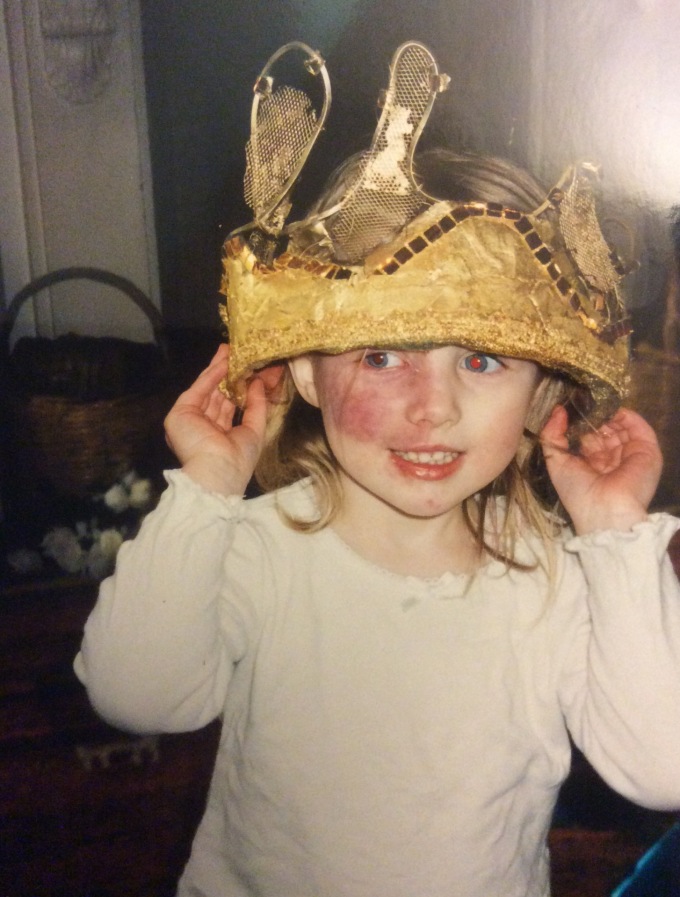
Pre-butterfly…
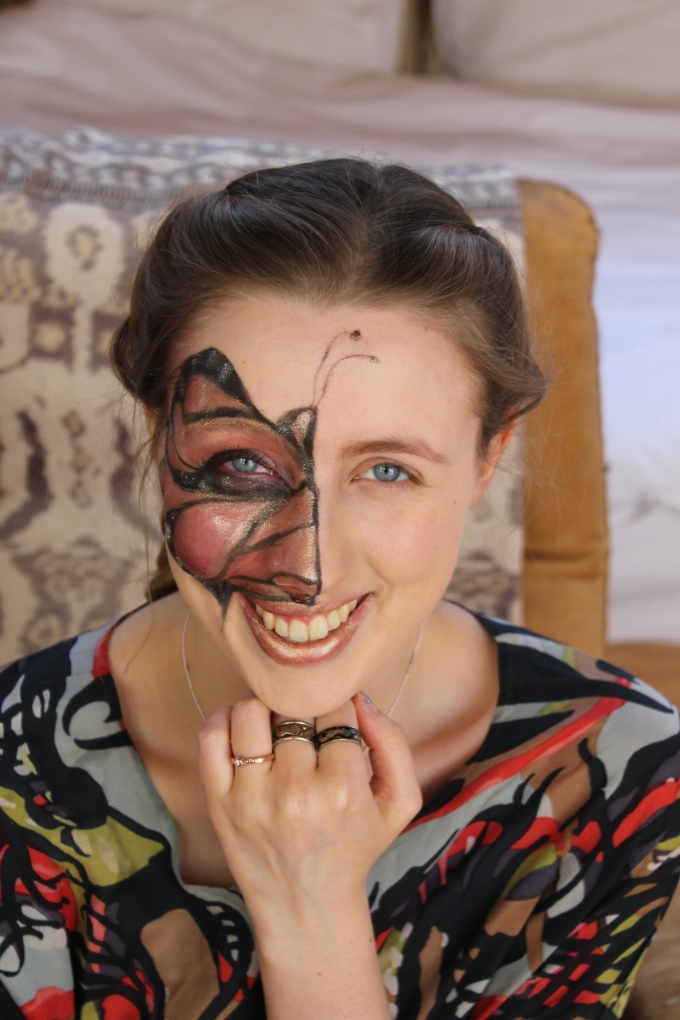
Wow.
”
After picking myself up off the floor at the gorgeousness of her face and Klimt-inspired work, I replied:
“Thank you so much for sending!! …I’m thrilled, inspired, and humbled to have served as any sort of encouragement on your journey! It can be hard to forge something new. So many people tie beauty to perfection without realizing it, and even those who are trying to embrace imperfections make the same mistake by hushing any admission of ‘error’; it feels quite liberating to admit that something’s an error, and still see that it’s beautiful.
I’d love to see more of your project!”
Luckily, she obliged, and explained her project in a bit more detail:
“I have [attached] a photograph of the BAFTA award I made using a cast of my face, then sprayed bronze and filled in my port wine stain with gold leaf. (I purposefully made the birthmark worth the most).
[BRILLIANT, no?! Read that part again – she made the birthmark worth the most…
She continues:]
There is a picture of my final piece: a mixture of oil painting, collage, gold leaf and mosaic. I included the butterfly picture I worked from as well.
…The theme set by the exam board was ‘Flaws, Perfection, Ideals and Compromise’ which basically set up a stomping ground for me to play around with this, which I’ve wanted to before in my art but couldn’t out of fear and shame. This time it felt a little different…
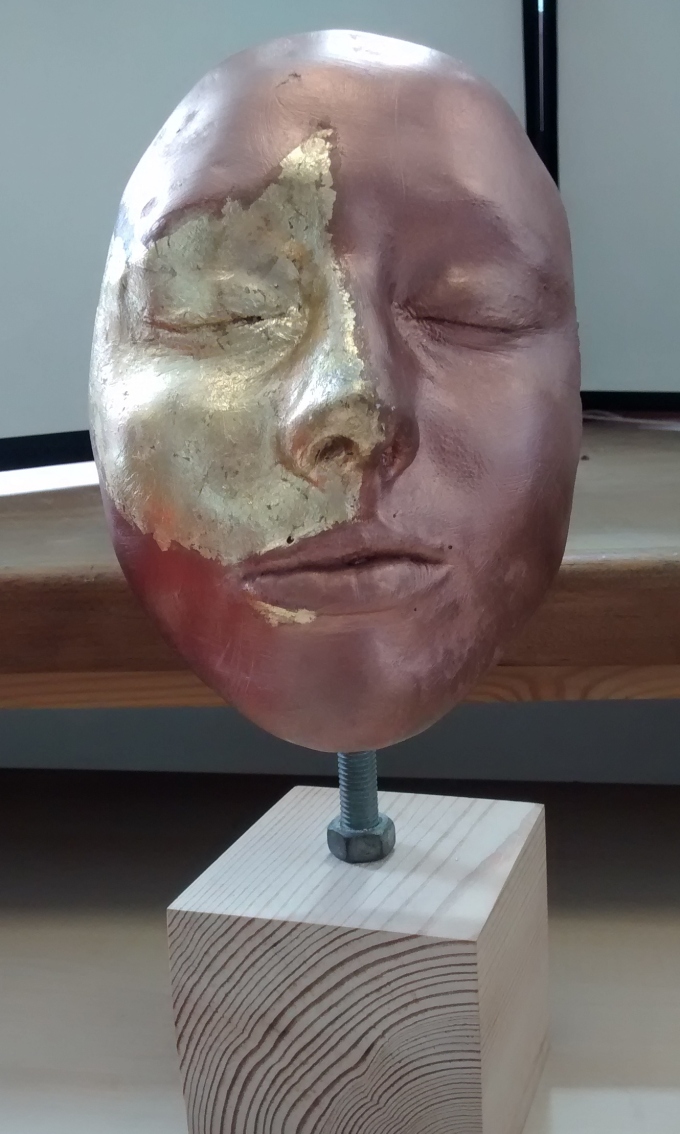
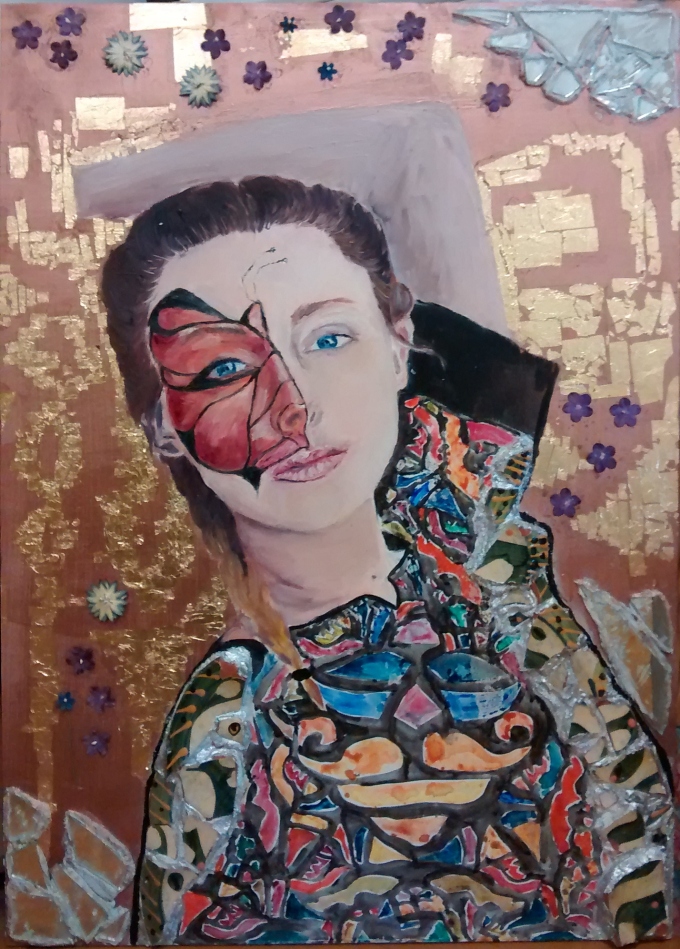
”
WELL DONE.
(We’ve enjoyed more correspondence since then, but for the sake of brevity I will leave this exchange as is here.)
Enjoy Millie’s art, dear reader. She is a treasure!
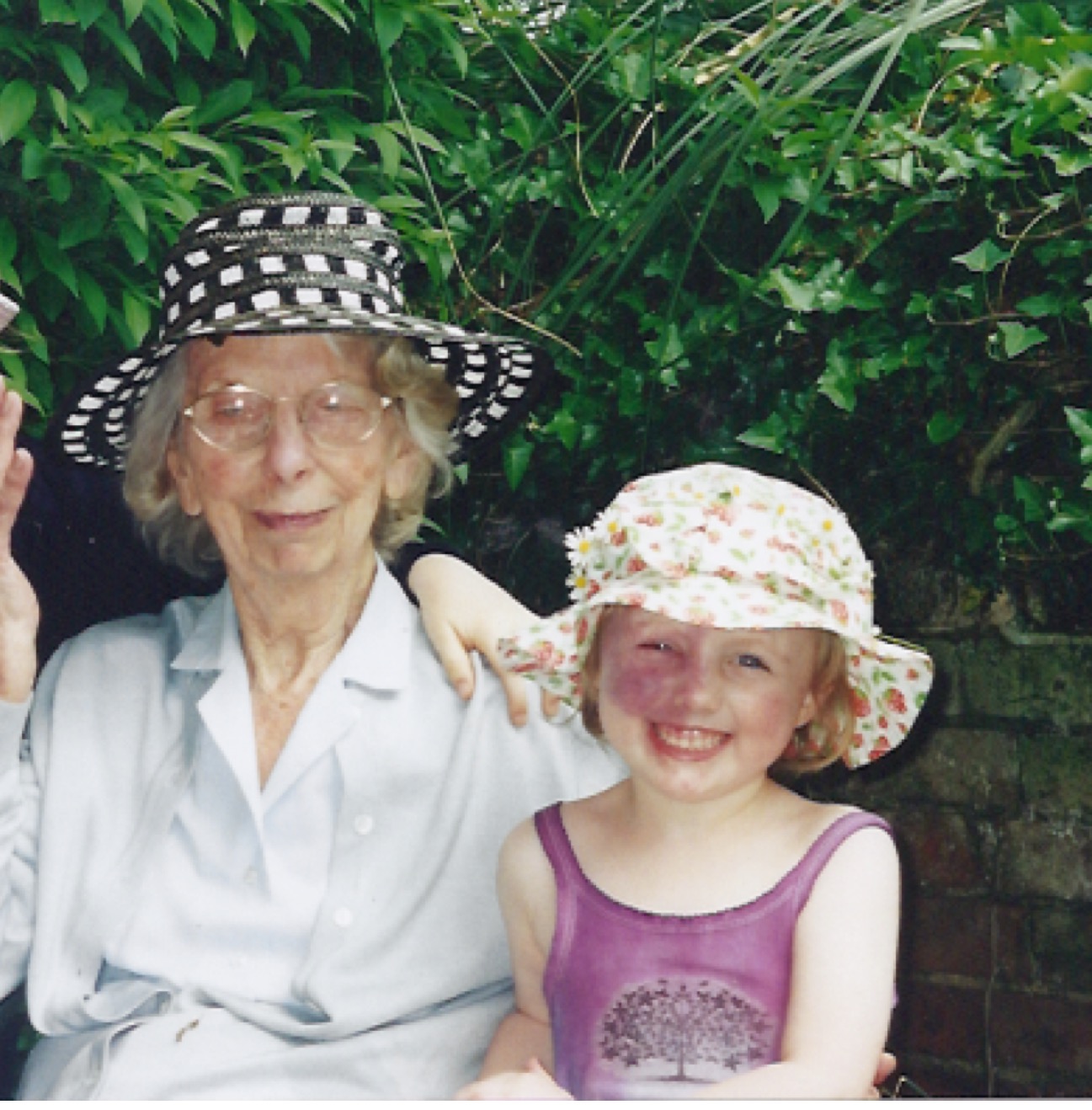
Please Ask!
Posted by Jennica
For all those lucky folks out there who encounter my gregarious social butterfly Adelaide and her Port Wine Stain, I tell you: Go ahead, Ask.
Seriously, mention it. Ask about it. Don’t worry about ‘shush’-ing your kid when they ask Addy what’s on her face. It’s good for her, and, honestly, my favorite topic in the WHOLE ENTIRE WORLD is my offspring, so, naturally, anything to do with them is a fabulous topic for me to talk on.
I want to talk about it. I want to tell you about Addy. To tell you what it was like to see her face for the first time. To share all my rookie scientific knowledge of those blood vessels and nerves and treatment options and research. And how awesome Children’s hospital has been to us. And how we’ve navigated her self-esteem so far. And what I’m afraid of in the future.
Because in my experience, all my chattering will prompt you to remember some long-forgotten relative or acquaintance with a port wine stain or something like it, and when you tell me all about your uncle, I’ll learn just a little bit more about how to raise a kid whose face carries a mutation, and how to do it better.
So please, ask. I want to answer.
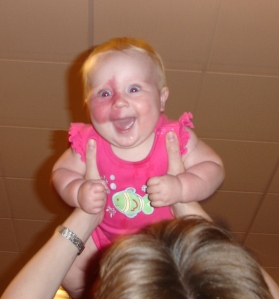
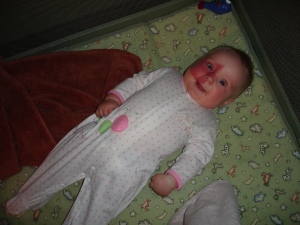
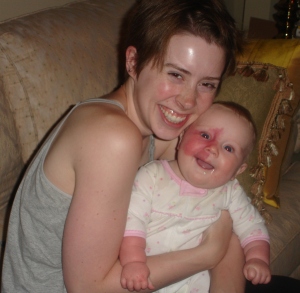

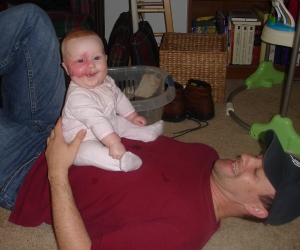

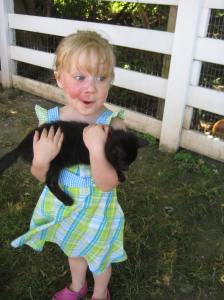
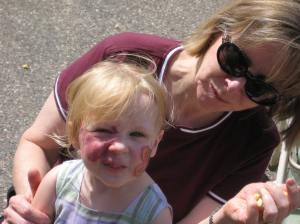


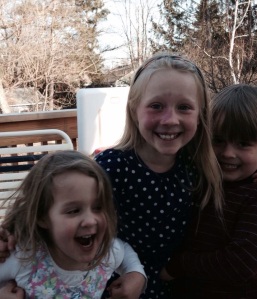


“Another port wine stain! Sshhh…”
Posted by Jennica
Confession: As you’ve seen here, I get excited when I see someone else with a port wine stain. Really excited. But suddenly, I face That Dilemma, now from the other side: do I ask them about it?
Running through my head: Will they think I’m too forward? Am I touching on childhood trauma? Do they hate their port wine stain and hate their life and hate their bullies and hate their parents? Will I bring all that up by being one *more* person to remark on it? Or, worse, will they think I’m a backward hick who’s never seen someone different? Will they patronize me and give me a lecture about how we’re all alike inside in spite of our physical differences and I shouldn’t even notice differences like that?
But… I’m on your team, man! I want to know about your stain! What’s your story?? What have you learned? What should I tell my daughter? Did you treat it? Why? What was it like? Would you do it again? Do you ever cover it up? What else do you know about it?
Usually, all this panicked thinking takes too much time and I just end up casting long, meaningful glances in their general direction while we’re standing in line, and hoping they’ll look up and suddenly notice a comrade in my daughter’s lovely similarly-port-wine-stained face, but instead they pay for their latte and walk out, perhaps vaguely aware of some stalker-like presence nearby.
Maybe next time.








